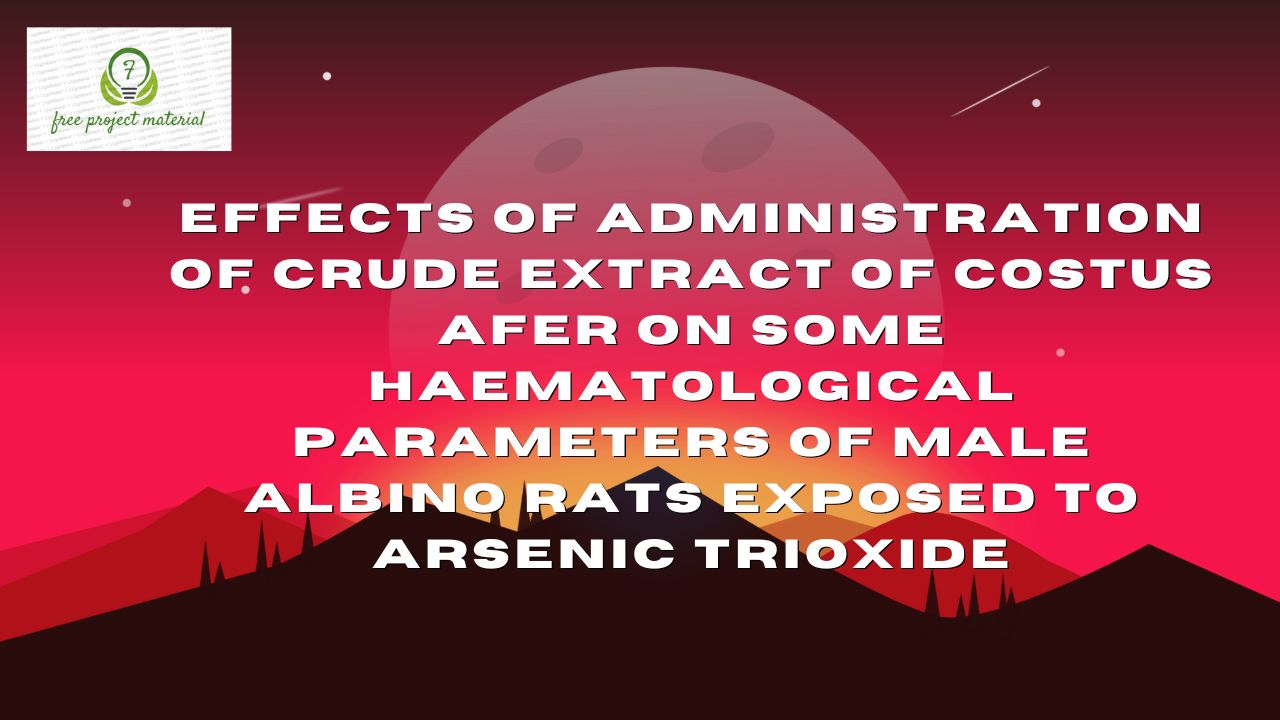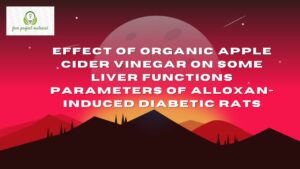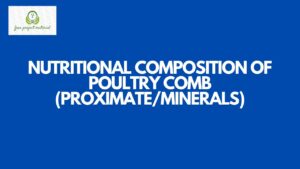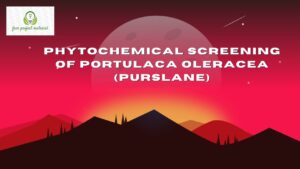ABSTRACT
The aim of this study was to examine the effect of effect of the administration of crud extract of Costus afer on some heamatological parameters of male albino wistar rats exposed to arsenic trioxide. Twenty (20) male albino wistar rats weighing 80 – 160g were randomly assigned five groups of 4 rats each. Group 5 served as the normal control which was given normal rat chow and distilled water. Group1, 2, 3 and 4 were administered with 25% of LD50 of arsenic trioxide (3.6 mg/kg bwt) for 3 days at two days interval, thereafter group 1, 2 and 3 were treated with 0.2ml, 0.4ml and 0.6ml of the crude extract of Costus afer for 14 days. All the experimental animals were given free access to normal rat chow and distilled water adlibitum. The result of this study revealed a significant (P<0.05) decrease in the RBC in the groups administered with arsenic trioxide only (group 4). While on co-treatment with 0.4ml of the crude extracts of Costus afer showed a significant increase in RBC when compared to arsenic trioxide oxide treated groups but non-significant (P>0.05) increase when compared to the normal control. RBC in Group 3 treated with 0.6ml significantly decrease when compared to the normal. However, there was no significant difference in HGB, PCV, MCHC and PLT in the treated groups when compared to the normal control. Arsenic trioxide is a very harmful toxicant that is capable of destroying the blood cells resulting in the development of aneamia. Costus afer could offer little blood boosting activity and could be toxic at high or chronic administration. Therefore it is recommended that its combination with other blood boosting plant materials could proffer a better erythropoiectic activity.
TABLE OF CONTENTS
Title Page – – – – – – – – – i
Certification – – – – – – – – – ii
Dedication – – – – – – – – – iii
Acknowledgements – – – – – – – iv
Abstract – – – – – – – – – v
Table of Contents – – – – – – – – v
CHAPTER ONE: INTRODUCTION
1.1 Background of the Study – – – – – – 1
1.2 Aim and Objectives of the Study – – – – 4
1.2.1 Aim – – – – – – – – – 4
1.2.2 Objectives – – – – – – – – 4
1.3 Scope and Limitation of the Study – – – – 5
1.4 Definition of Terms – – – – – – 5
CHAPTER TWO: LITERATURE REVIEW
2.1 Botanical and Ecological Distribution – – – – 6
2.2 Nutritional and Phytochemical Composition of Costus afer – 7
2.3 Pharmacological Property of Costus afer – – – 9
2.3.1 Antidiabetic and Hypolipidemic property – – – 9
2.3.2 Protective Ability Against Kidney, Liver
and Heart Damage – – – – – – – 13
2.3.3 Analgesic and Anti-inflammatory Effect – – – 15
2.3.4 CNS Depressant Activity – – – – – – 17
2.3.5 – – – – – – – – – – 18
2.4 Toxicological Effect of Costus afer – – – – 19
2.5 Sources of Arsenic Poisoning – – – – – 20
2.6 Hematological Effects of Arsenic – – – – 26
2.7 Heamatological Parameters – – – – – 23
2.7.1 Red Blood Cell – – – – – – – 23
2.7.2 Packed Cell Volume – – – – – – 26
2.7.3 Platelet – – – – – – – – 28
2.7.4 Haemoglobin – – – – – – – 30
2.7.5 Mean Corpuscular Concentration – – – – 32
CHAPTER THREE: MATERIALS AND METHODS
3.1 Materials – – – – – – – – 34
3.2 Methods – – – – – – – – 35
3.2.1 Sample Collection – – – – – – – 35
3.2.2 Preparation of Heavy Metals – – – – – 36
3.2.2 Experimental Design and Animal Grouping – – – 36
3.3 Collection of Blood Sample – – – – – 38
3.4 Determination of Hematological Parameters – – – 38
3.4.1 Hematological Analysis – – – – – – 38
3.4.2 Red Blood Cells – – – – – – – 39
3.4.3 Platelet Count – – – – – – – 40
3.4.4 Packed Cell Volume – – – – – – 41
3.4.5 Mean Cell Haemoglobin Concentration – – – 41
3.5 Statistical Analysis – – – – – – – 42
CHAPTER FOUR: RESULTS AND DISCUSSION
4.1 Results – – – – – – – – 43
4.2 Discussion – – – – – – – – 45
CHAPTER FIVE: CONCLUSION AND RECOMMENDATIONS
5.1 Conclusion – – – – – – – – 54
5.2 Recommendation – – – – – – – 54
References
CHAPTER ONE: INTRODUCTION
1.1 Background of the Study
The use of traditional medicine has been essential to the health of millions of people resident in rural and semiurban regions of African countries, where these herbal remedies are mostly available and simply affordable (Mahomoodally, 2008). Costus afer (Ker Gawl.) is a herbaceous plant that belongs to the family Zingiberaceae and has been evidenced to have many therapeutic effects in humans and animals. Reports on the phytochemical analysis of Costus afer revealed that the plant is rich in steroidal saponins, flavonoids, alkaloids, tannins, terpenoids, sapogenins, oxalates, furans, furan derivatives, and starches (Ezejiofor et al., 2015). These phytochemicals are rich in antioxidants. The pharmacological activities associated with Costus afer include antioxidant property, hepatoprotective, nephroprotective, antidiabetic role (Ezejiofor et al., 2015), and antinociceptive role (Ijioma et al., 2014).
There is little knowledge on Costus afer effects on low dose heavy metal mixture (Pb, Cd, and Hg) induced serum lipid profile alterations and hematological changes despite its known pharmacological benefits. Over ten years ago, traditional medicines have become a topic of global discussion and many developing nations depend on this type of medication to solve their health care problems (Salazar-Flores et al., 2019). Costus afer is commonly found in shady or moist forests or riverbanks of tropical West Africa which includes Cameroun, Ghana, and Nigeria and has been beneficial to many cultures in treating diseases.
Arsenic is a chemical substance that behaves like a metal because it is an element that is present in the environment and does not deteriorate. Arsenic is a toxic element for humans and it is commonly associated with serious health disruptions (Brookes, 1998).
Arsenic compounds are released from the earth’s crust via natural processes and from certain human activities. Natural processes involve volcanoes, weathering of arsenic containing minerals from the area and from human activities (via industrial processes); such as mining, in the glass industry as a clarifier as a wood preservative (copper arsenite), in the production of semiconductor (Gallium arsenide), coal-fired power plants and as a product of smelting of non-ferrous metals, particularly gold and copper. Environmental contamination also occurred because it is used in agricultural pesticides. Humans may come in contact with arsenic in contaminated dusts, fumes, or mists. They may eat food either contaminated with arsenical pesticides or grown with arsenic-contaminated water or in arsenic-rich soils (Nriagu and Azcue, 1990).
Many epidemiological studies have revealed that people are more likely to have vascular diseases when living for many years in areas where well water are contaminated with inorganic arsenic (as arsenite and arsenate) (Lilienfeld, 1988; Engel et al.,1994; and Chiou et al., 1997). Inorganic arsenic compounds are well recognised human carcinogens (IARC 1980 and 1987). Arsenic poisoning is second to lead as the most frequently reported heavy metal toxicant. Arsenic exposure causes both acute and chronic toxicity in humans. Human arsenic exposure is related to severe health problems such as skin cancer, diabetes, liver, kidney and CNS disorders (Neiger et al., 1985).
Haematological assessment can be considered as a practical diagnostic tool (Yasini et al., 2012). According to Wikihow (2013) haematological analysis involves the determination of different blood parameters, which can be done using either the electronic quantification or the manual quantification. The electronic quantification can be done with the use of the auto counter and these displace about 15 parameters, while manual quantification of Packed Cell Volume (PCV) for example is by the use of micro haematocrit centrifuge. This micro haematocrit centrifuge is used to determine the Packed Cell Volume (PCV), from which many parameters can be obtained (Wikihow, 2013). The best way to determine blood parameters is through the electronic device called autocounter because it gives accurate values and manual red blood cell counting is obsolete and inaccurate. Although the manual quantification is also used to c onfirm whether the values obtained from auto counter correlate with it for packed cell volume (PCV). With the exception of trace element analysis, routine haematology is less frequently performed in farm animal practice than small animal practice. This haematological investigation tends to be limited to selected test for flock problems and specific disease presentations in a more valuable individuals (Milne and Scott, 2006).
1.2 Aim and Objectives of the Study
1.2.1 The aim of this Research work is to investigate the effect of administration of crude extract of Costus afer on some hematological parameters of male albino rats exposed to Arsenic Trioxide.
1.2.2 Objectives
The Objectives of the study are:
- To investigate the Effect of Crude Extract of Costus afer albino rats exposed to Arsenic Trioxide.
- To determine Haematological parameters of albino rats exposed to Arsenic trioxide.
- To discuss the significance of the resultsTo make relevant suggestions/recommendation
1.3 Scope and Limitation
This research projects was designed to investigate the effect of the administration of crude extract of Costus afer on some heamatological parameters of male albino rats exposed to Arsenic trioxide. Both time constraint and peer finances limited the scope of this research work.
1.4 Definition of Terms
Arsenic Trioxide: Is a chemical substance that behaves like a metal because it is an element that is present in the environment and does not deteriorate.
Costus afer: Is usually an unbranched tropical plant often seen a herb with a creeping rhizome. It is a relatively small monocot shrub which is commonly found in humid and monstrous forests and riverside.
Haematological Parameters: Haematological parameters are good indications of the physiological status of farm animals.



